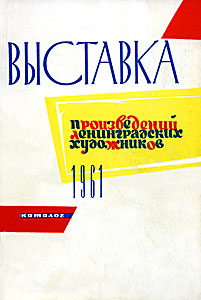Related Research Articles

Saint Petersburg State University is a public research university in Saint Petersburg, Russia. Founded in 1724 by a decree of Peter the Great, the university from the beginning has had a focus on fundamental research in science, engineering and humanities.

The Russian Academy of Arts, informally known as the Saint Petersburg Academy of Arts, was an art academy in Saint Petersburg, founded in 1757 by the founder of the Imperial Moscow University Ivan Shuvalov under the name Academy of the Three Noblest Arts. Elizabeth of Russia renamed it the Imperial Academy of Arts and commissioned a new building, completed 25 years later in 1789 by the Neva River. The academy promoted the neoclassical style and technique, and sent its promising students to European capitals for further study. Training at the academy was virtually required for artists to make successful careers.
Soviet nonconformist art was Soviet art produced in the former Soviet Union outside the control of the Soviet state started in the Stalinist era, in particular, outside of the rubric of Socialist Realism. Other terms used to refer to this phenomenon are Soviet counterculture, "underground art" or "unofficial art".
The Rossiya Bank is a Russian joint stock bank founded on June 27, 1990. The company's headquarters are in Saint Petersburg.

Vladimir Ivanovich Ovchinnikov was a Soviet, Russian painter, lived and worked in Leningrad, member of the Leningrad branch of Union of Artists of Russian Federation, regarded as one of the leading representatives of the Leningrad school of painting, most famous for his landscape paintings.

Arseny Nikiforovich Semionov was a Soviet painter and art teacher, lived and worked in Leningrad, a member of the Leningrad Union of Artists, regarded as one of the representatives of the Leningrad school of painting, most famous for his landscape and cityscape paintings.

Dmitry Ivanovich Maevsky was a Soviet Russian painter, lived and worked in Leningrad, a member of the Leningrad Union of Artists, regarded as one of the representatives of the Leningrad school of painting, most famous for his lyrical landscapes.
Elena Mikhailovna Kostenko was a Soviet Russian painter, living and working in Saint Petersburg, a member of the Saint Petersburg Union of Artists, regarded as one of the major representatives of the Leningrad school of painting, most famous for her portrait paintings.

Leningrad Secondary Art School was established in 1934 as the first art school for gifted children.

The Leningrad School of Painting is a phenomenon that refers to a large group of painters who developed in Leningrad around the reformed Academy of Arts in 1930–1950 and was united by the Leningrad Union of Soviet Artists (1932–1991).

First National Art Exhibition "Soviet Russia" was one of the largest Soviet art exhibitions of the 1960s. The exhibition took place in Manezh Exhibition Hall.

Zonal Art Exhibition "Leningrad" became one of the most significant, successful and productive events in the history of Soviet art exhibitions of the 1960s through the 1980s. The exhibition took place in State Russian Museum.

The Regional Art Exhibition "Our Contemporary" became one of the most important and largest Soviet Art exhibition of the 1970s. The Exhibition took place in the State Russian Museum and in the exhibition halls of the Leningrad Union of Soviet Artists.
The Fine Arts of Leningrad retrospective exhibition became the largest showing of Leningrad artists in the Soviet History outside the city, as well as in total one of the most important art exhibitions in USSR of the 1970s. The exhibition took place in the Moscow Manezh.

Third National Art Exhibition "Soviet Russia" became a main national art event of 1967, as well as one of the largest Soviet art exhibitions of the 1960s. The exhibition took place in Manezh Exhibition Hall.

Retrospective Exhibition "Leningrad painting of 1950–1980s" became one of the most notable event in the Saint Petersburg exhibition live of 1994. The Exhibition took place in Exhibition Centre of Saint Petersburg Union of Artists, located in the historical building on Bolshaya Morskaya st., 38. There were exhibited 83 art works from private collections of 43 important masters of the Leningrad School of Painting.

Annual Exhibition of Leningrad artists become one of the largest Soviet Art Exhibition of 1960 year. The Exhibition took place in Leningrad Union of Soviet Artists Exhibition Halls on Bolshaya Morskaya st. 38.

Exhibition of Leningrad artists of 1960 become one of the largest Soviet Art Exhibition of 1960 year. The Exhibition took place in State Russian Museum.

Exhibition of Leningrad artists of 1961 was opened on September 13, and become one of the largest Art Exhibition of 1961 in the USSR. The Exhibition took place in State Russian Museum.

Exhibition of Leningrad artists of 1950 became one of the notable event in Art live of Leningrad of the beginning of 1950s. The Exhibition took place in the State Russian Museum.
References
- ↑ Neva
- ↑ magazine "Friendship of Peoples", 1989, № 2, p. 267
- ↑ "Нева — Журнальный зал".